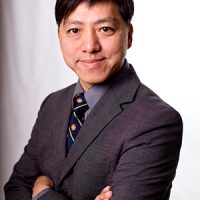Embedded Wireless System and Ultrasound Imaging for Biomedical Applications
Date: 26 October 2018 (Friday), 14:00 PM to 16:00 PM
Venue: Conference Room 530, 5th Floor, Science Building, Fudan University
Invited Speakers: Edmond Lou
Low power embedded wireless systems has gained increasing importance for a variety of industrial, military and biomedical applications. With the advances in MEMS technology and its associated interfaces, signal processing, and RF circuitry, wireless sensor network systems also become significant. In a wireless sensor network, there are many sensing nodes and its major advantage is to provide users unrestricted access to monitor different locations simultaneously. My research team is one of the few groups in the world that applies a wearable wireless sensor network system to investigate the biomechanics of the brace treatment for children with scoliosis. Scoliosis is a three dimensional deformity of the spine. It affects approximately 3% of adolescents and can impact their entire life. However, the actual force action of the brace is not fully understood. Long brace wear time negatively impacts social and physical activities, but short wear time does not provide the optimum outcomes. This highlights the importance of determining an optimal effective wear time. Using a sensor network, my team will be able to 1) quantify the forces acting on the body during daily activities, 2) determine the relationship between quantity (wear time) and quality (wear tightness) of brace usage with respect to the curve response, and 3) predict the brace treatment outcomes at an early stage of bracing. Furthermore, one of my research goals is to apply ultrasound imaging method to assess, diagnose and assist treatment for scoliosis. Currently, most of the scoliosis centers use radiographs to assess the severity of the curvature, to make the treatment decision and to evaluate the treatment outcomes. Taking a radiograph exposes a patient to harmful radiation. My team is the leading team in the world to apply the ultrasound techniques to assess the internal spinal deformity. The challenge of this approach is the development of the real-time image processing algorithms to display 3D ultrasound images in a portable ultrasound machine. A new vision is to integrate the 3D ultrasound imaging processing tools synchronized with a 3D wireless spatial pressure control sensor network to study the 3D mechanical response of the spine to physical loadings in real time. Understanding the mechanical response will aid orthotists to design a better brace to treat children who have scoliosis.

Edmond Lou, P.Eng, PhD
Research Scientist, Alberta Health Services
Associate Professor, University of Alberta
Senior Advisor, Scoliosis Screening Program, WuXi Rehabilitation Hospital, China
Edmond Lou received his Ph.D. degree in Electrical and Computer Engineering from the University of Alberta in 1998. He is the head Research Scientist of the Edmonton Scoliosis Interdisciplinary Research Group since 2008. His role in Alberta Health Services is to promote and advance clinical research and technology development to improve the lives of persons with disabilities. Currently, he is an Associate Professor in the department of Electrical and Computer Engineering at University of Alberta. He has also held appointments as an Adjunct Professor in the departments of Biomedical Engineering, Pediatrics, Surgery, and Radiobiology & Diagnostic Imaging. One of his key key research is to improve the treatment effectiveness for children with spinal deformities. Ultrasound imaging and wearable computers have been applied to assist orthotists to design better spinal orthosis and to provide better visualization during spinal surgery. Dr. Lou has won several presentation awards in his ultrasound invention. His smart orthosis device has demonstrated it can improve the effectiveness of spinal orthosis for the treatment of scoliosis. Dr. Lou has been highly productive in research outputs with over 100 peer referred publications and 160 conference proceedings. Until today, Dr. Lou has supervised over 3 postdoctoral fellows, 45 graduates and 100 undergraduates. He was granted 5 US patents for his inventions. He has been invited in numerous international conferences and University Symposiums as a keynote speaker. Dr. Lou is also an Associate Fellow of Scoliosis Research Society, a senior member of IEEE and was the Conference Chair of the International Research Society of Spinal Deformities in 2016.